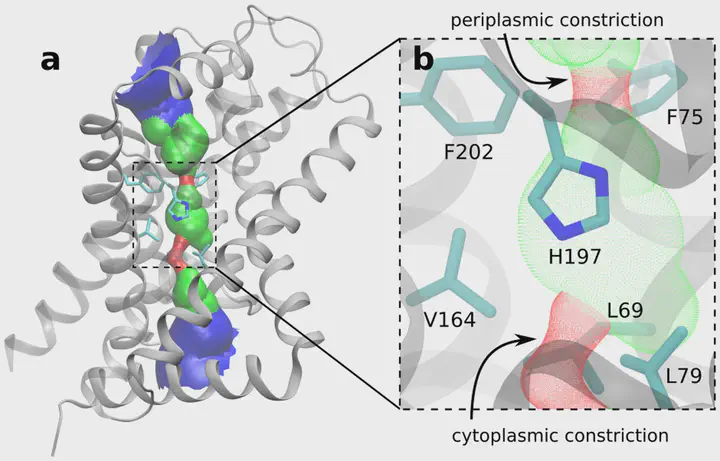Energetics and mechanism of anion permeation across formate-nitrite transporters

Abstract
Formate-nitrite transporters (FNTs) facilitate the translocation of monovalent polyatomic anions, such as formate and nitrite, across biological membranes. FNTs are widely distributed among pathogenic bacteria and eukaryotic parasites, but they lack human homologues, making them attractive drug targets. The mechanisms and energetics involved in anion permeation across the FNTs have remained largely unclear. Both, channel and transporter mode of function have been proposed, with strong indication of proton coupling to the permeation process. We combine molecular dynamics simulations, quantum mechanical calculations, and $pK_a$ calculations, to compute the energetics of the complete permeation cycle of an FNT. We find that anions as such, are not able to traverse the FNT pore. Instead, anion binding into the pore is energetically coupled to protonation of a centrally located histidine. In turn, the histidine can protonate the permeating anion, thereby enabling its release. Such mechanism can accommodate the functional diversity among the FNTs, as it may facilitate both, export and import of substrates, with or without proton co-transport. The mechanism excludes proton leakage via the Grotthuss mechanism, and it rationalises the selectivity for weak acids.